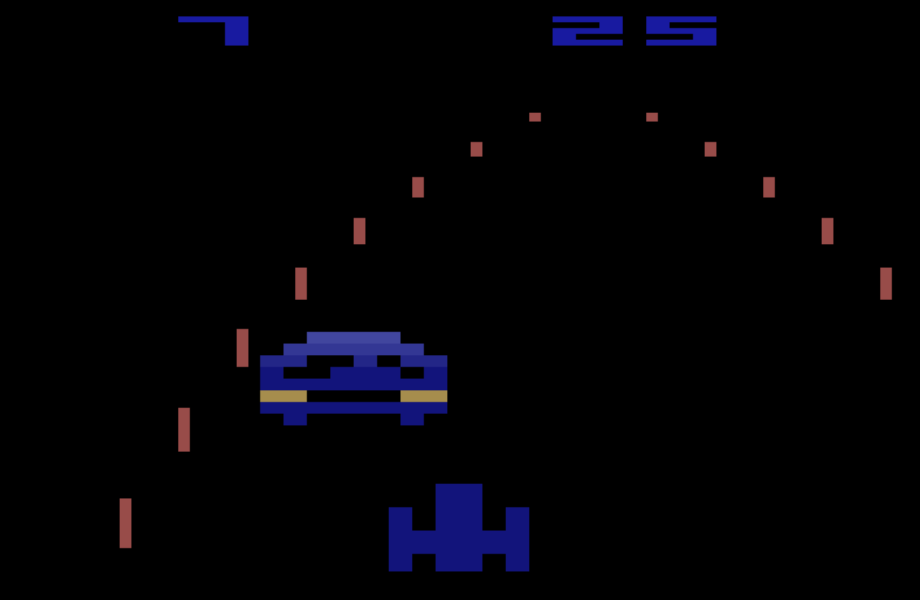What makes for a solid driving game? Here’s what I know for sure, it’s not the graphics. Have a seat in the cockpit of a Pole Position arcade cabinet and tell me you don’t enjoy the low-fidelity thrill of driving a pile of pixels doing their best impression of a real race car around the track. But let’s dial back the graphics even more and travel back to the year 1976 to see if this theory hold up.
The simple thrill of Atari’s Night Driver arcade game couldn’t be any more black and white. No, really. The graphics (such as they are) primarily consist of white rectangles called pylons that twist and turn to reveal the track in a first-person perspective as you accelerate. And while there is a car on the bottom of the screen, it’s an overlay made of plastic, not pixels.
So why call it Night Driver? In 1976, drawing much in the way of recognizable graphics on screen was asking too much. But a night time drive served as a decent enough conceit for why players could see the road but not any objects like buildings or trees whizzing by your car.
Inspired by the German-produced Nürburgring 1 (1976) arcade game, Night Driver’s game play was simple: Race as far as you can to rack up points while battling the clock. Above all else, keep moving and don’t hit the pylons. To help with the immersion, cabinets came equipped with a steering wheel, gear shift, and a foot pedal, not unlike Pole Position in 1982.


In 1980, Night Driver parked in living rooms via the Atari VCS console. This version of the game added innovative new ideas like color, oncoming cars to avoid, and some of those graphical details missing from the original like houses on the side of the road. This version of the game used the Atari paddle controller as a stand-in for the arcade version’s full-on steering wheel though.
Night Driver is remembered for being one of the first driving games with a first-person perspective. While we can’t say it’ll turn any 21st century heads, we can appreciate it for nailing the thrill of driving fast and staying on track, even if it required a little imagination.
